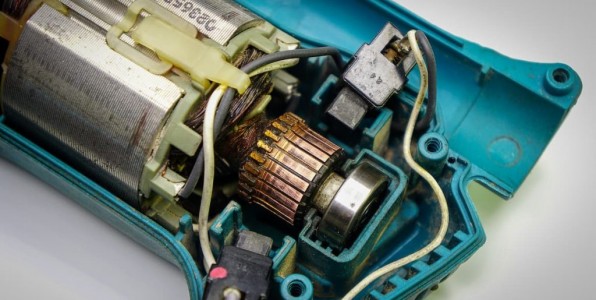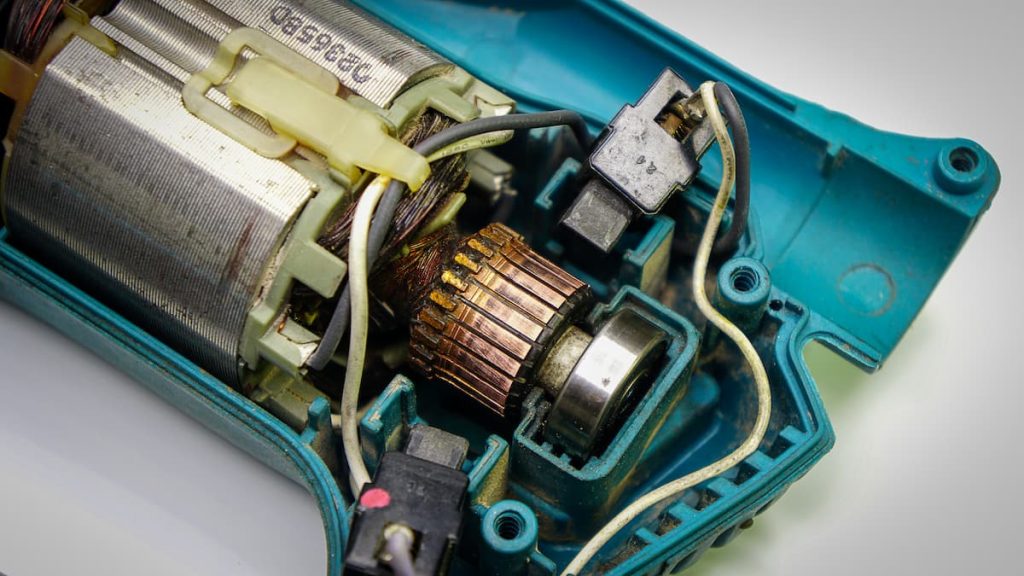Signs Your Power Tools Need New Carbon Brushes

Signs Your Power Tools Need New Carbon Brushes
The post Signs Your Power Tools Need New Carbon Brushes appeared first on UK Construction Blog.
Maintaining the efficiency and longevity of your power tools hinges significantly on the condition of their carbon brushes. These small components are pivotal, as they conduct electricity and facilitate motion within the electric motors of your tools. As time goes by, wear and tear on these brushes can cause a noticeable drop in your tool’s performance. That’s why it’s crucial to spot signs of their deterioration early. This guide highlights the definitive signs that your carbon brushes need replacing, ensuring your tools remain in top working condition without unexpected interruptions.
Key Indicators for Carbon Brush Replacement
Knowing when to replace the carbon brushes in your power tools is essential for keeping them running smoothly and making them last longer. Over time, these small but crucial components wear down due to friction, impacting the overall functionality of your tools. Here’s a closer look at the key signs indicating it’s time for a replacement.

Intermittent Motor Operation
One of the most evident signs of worn carbon brushes is intermittent motor operation. This issue manifests as the motor unexpectedly stopping and starting during use or responding sluggishly. The primary cause is the reduced ability of worn brushes to conduct electricity consistently. As brushes wear down, their contact with the motor’s commutator becomes less stable, disrupting the electrical flow necessary for smooth operation. If you’re looking for replacement carbon brushes, Top Deals Online are a good supplier (see their website here).
Excessive Sparks
Frequent sparking from a tool’s motor is a telltale sign that the carbon brushes may need replacing. This sparking usually happens because the brushes have worn down to the point where they no longer consistently touch the motor’s commutator. When this occurs, the electrical current isn’t transferred smoothly, causing sparks as the connection breaks and reconnects intermittently. This not only affects the tool’s efficiency but also poses a safety hazard due to the potential risk of electrical shorts and fire.
Replacing worn brushes promptly can significantly reduce these risks. If you want to learn more about the signs of worn carbon brushes and how to fix them, check out this detailed source.
Decreased Performance
A noticeable decline in efficiency or power output is a clear indicator that the carbon brushes in your power tools may require replacement. This drop in performance stems from the brushes’ diminished ability to conduct electricity effectively. When the brushes wear down, they don’t connect as well with the commutator, which means the electrical current doesn’t transfer as effectively. This inefficiency directly impacts the tool’s power output and overall functionality.
To address this, regularly check the condition of the brushes and replace them if you notice signs of uneven wear or if they’ve become significantly shorter. Ensuring your tools have high-quality carbon brushes not only restores their performance but also extends their lifespan.
Unusual Noises
Hearing grinding, screeching, or other unusual sounds when using your power tool is a significant sign that the carbon brushes might be worn out. These noises often arise from increased friction and vibration as the brushes deteriorate. Incomplete contact between the brushes and the commutator disrupts smooth operation, causing these disruptive sounds.
When these noises occur, instead of a general inspection, focus on a precise check for misalignment and assess the brush spring tension, which can also contribute to abnormal sounds. Adjusting or replacing the springs can sometimes resolve the issue without immediately replacing the brushes if they are not too worn. Moreover, lubricating the bearings might also reduce noise, indicating that comprehensive tool maintenance is timely.
Difficulty Starting
When your power tool hesitates or fails to start, worn carbon brushes are often to blame. Inadequate brush contact with the commutator hampers the necessary electrical flow, crucial for the motor’s activation. Over time, brushes that wear down may not align properly, causing starting issues.
Start by checking the alignment and condition of the brushes. If they are significantly worn, replacing them with new ones can greatly enhance startup reliability. A wide range of replacement brushes suited for different tool models can ensure proper fit and function. Regular cleaning of the brushes and the commutator also maintains optimal contact and electrical flow, which is essential for consistent power tool performance.
In Conclusion
Maintaining your power tools with timely replacements of carbon brushes is essential not just for their functionality but also for safety. Ignoring the warning signs of worn brushes can lead to inefficient performance, potential tool failure, and costly repairs. Taking a mindful approach to tool maintenance can boost your productivity and keep your equipment reliable for any task. The condition of your power tools directly impacts the quality of your work, highlighting the importance of regular upkeep and attention to their critical components. For more insights into the growing demand for power tools, consider exploring recent market trends and user feedback.
Comments are closed